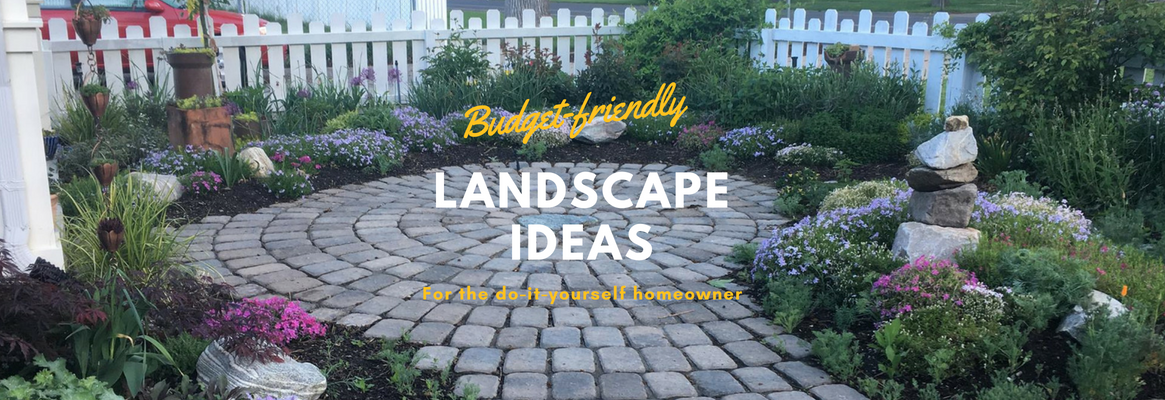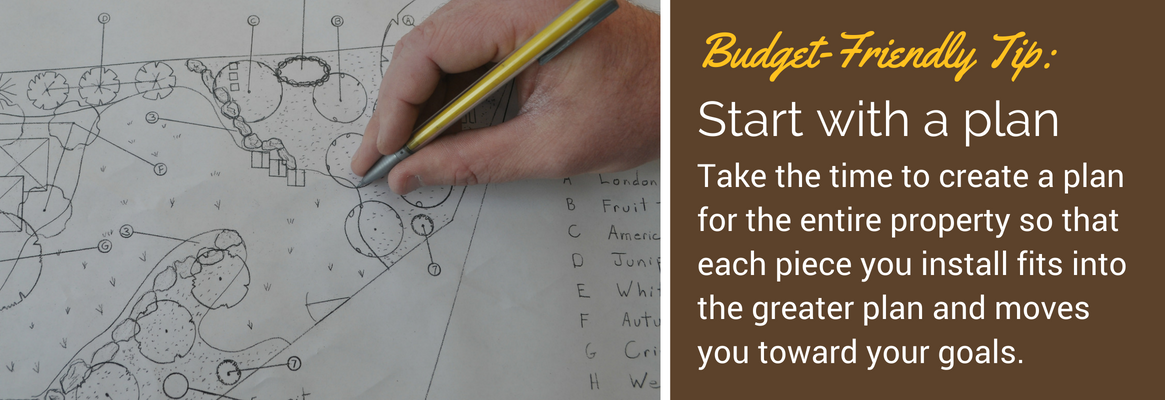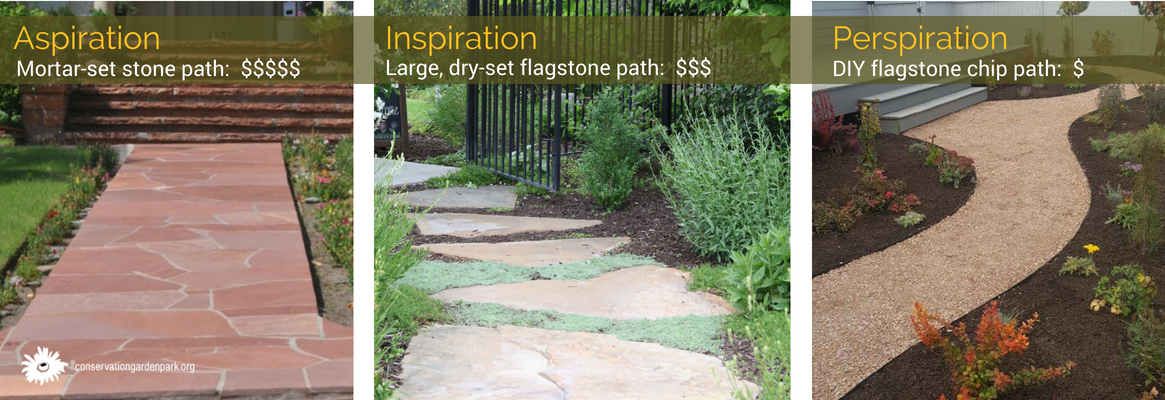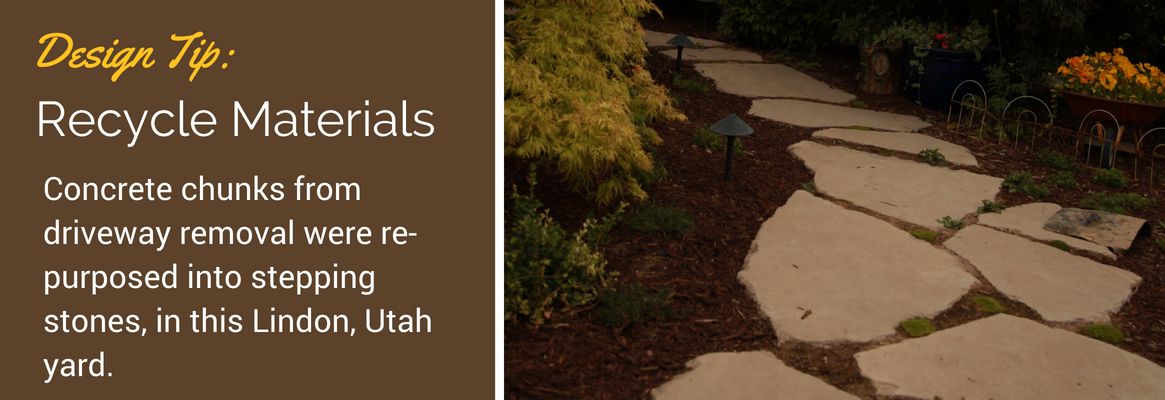
Budget Friendly Landscape Ideas
-
As one of the landscaping instructors for the Conservation Garden Park, I frequently get comments from students in the class along the lines of “Your yard must look amazing!” And I cringe a little bit. It will be amazing (someday), but, like yours, my yard is a work in progress and I’m making changes as I can afford them—one project at a time. The good news is that you don’t have to have deep pockets to make changes—especially if you can invest your own time and energy.
Don’t get me wrong—there are places where you shouldn’t cut corners, like creating a high-quality irrigation system, but there are plenty of ways to stretch your landscape dollars that won’t come back to bite you later.
-
Start with A Plan
It’s expensive to install a landscape, and even more expensive to go back and change it all later. No one wants to pay for a landscape twice. Your plan doesn’t have to be a fancy drawing from a professional designer, but it does need to be well-considered.
The easiest way to create a landscape plan is to follow the 5-step Localscapes® method. Localscapes was created by Utah-based experts in landscape design, construction, horticulture and maintenance, and formulated to work well in our challenging climate. Classes are taught statewide and the website, http://localscapes.com, provides free and low-cost resources for the do-it-yourself homeowner.
Overwhelmed with the mere idea of making a plan? This video we created for the Localscapes YouTube channel shows you how to use Google Maps to create the base map on which you will draw your design: How to Use Google Maps to Create a Landscape Basemap -

-
Sweat Equity
Doing the work yourself may pay off—depending on the task. Installing paths and irrigation, planting and mulching, or building your own amenities such as fences or trellises will not only save money, they’ll also provide you with a sense of satisfaction. If you’re renovating an existing yard (likely because the “start with a plan” part did not happen), projects can be completed one at a time to stretch the process over a longer period, making each change less expensive and overwhelming.
However, the smartest part of doing it yourself is knowing when you shouldn’t. Carefully assess your own skills and the amount of time you’re willing to invest in learning how to do the tasks properly so you don’t get yourself in over your head. -

-
Crowdsourcing
When it comes to plants and landscape materials, crowdsourcing (appealing to family, friends, classifieds or local groups) may yield great results if you’re willing to extend yourself a little and you’re not in a hurry to get the work completed. We’ve seen flagstone offered for free—if you’re willing to dig them from a yard that no longer needs them or load and haul excess materials away.
Homeowners with established yards need to divide perennials in the spring or fall. Put out a call on social media or in your neighborhood letting people know you're looking for extra plants for your yard should they be getting rid of any. Plant swap groups on Facebook are another place to pick up extras from generous gardeners.
That said, you'll also want to make sure you aren't simply moving a problem plant from their yard to yours. Whether you're getting plant divisions from a homeowner or purchasing plants on end-of-season or "this plant is nearly dead" sales, check to make sure that it's a plant you won't regret later. Navigate over to our plant database here on the Conservation Garden Park website to research plant offerings. -

-
Budget-Friendly Alternatives
There are almost always budget-friendly alternatives for materials you'd like to use in the landscape. Who doesn't love professionally installed stonework? The paths below show the same material used in different ways, each with a very different price point. While you might wish for a high-end mortared flagstone path, alternate forms of the same material can provide a similar feel but at a substantially reduced cost. Stepping stones are less expensive than a professionally installed path and Flagstone Chip or chat are even less expensive. For a fraction of the cost of a hiring a real stone mason, you can have a beautiful, functional path. Sure, it may not be as beautiful as the high-end stone work but it's still attractive.
-

-
Recycle Materials
See old materials in new ways. In the example below, the homeowner used chunks of concrete that were removed from a driveway replacement and turned them into side yard stepping stones. This project saved them money twice-- first in the fees and labor required to haul away and dispose of the used concrete and secondly on the cost of stepping stones they would have had to purchase for the side yard. -

-


